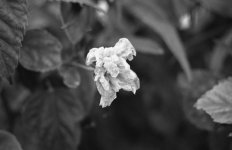charmicarmicat
Member
Hello all.
So i've been doing my thing with Tri-X and Rodinal/Adonal and I am ready to start using DD-X with Tri-X. There are plenty other developers but I decided to try DD-X.
Can any of you folks give me some tips on how to go about it as far as inversions per minutes/seconds etc etc?
I may not have looked good enough but I couldn't find much online. All I've found was the time, 8 minutes, temp, 20C, and something like 4 inversions every minute. Nothing about gentle agitation or anything in that genre.
If any of you have any tips, I am all ears. And eyes 🙂
Thanks for taking the time,
Guy.
So i've been doing my thing with Tri-X and Rodinal/Adonal and I am ready to start using DD-X with Tri-X. There are plenty other developers but I decided to try DD-X.
Can any of you folks give me some tips on how to go about it as far as inversions per minutes/seconds etc etc?
I may not have looked good enough but I couldn't find much online. All I've found was the time, 8 minutes, temp, 20C, and something like 4 inversions every minute. Nothing about gentle agitation or anything in that genre.
If any of you have any tips, I am all ears. And eyes 🙂
Thanks for taking the time,
Guy.





